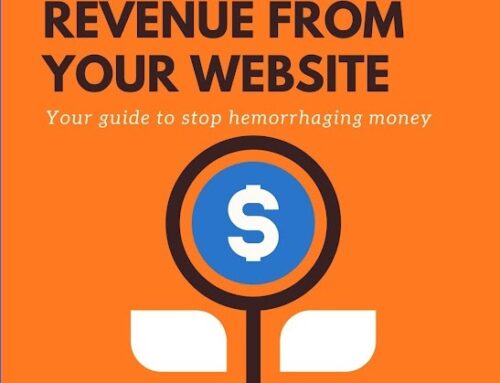Research is critical to successfully implementing any of these tactics mentioned below. Without research, you’d be grasping at straws. Research provides solid facts that put meat into your marketing tactics.
I recently told you how I performed research on 50 potential clients using the internet in How To Do New Client Research article.
Armed with the results of that research, we ready to make use of it in our marketing tactics.
There are many options but we’ll start with four ways to use this research.
First, use the data to write a white paper as a lead generation report
“B2B marketers report sales lead quality as their #1 most important metric for measuring content marketing success; even more important than sales and conversions.” (source)
Because sales lead quality is so important, utilizing a white paper or special report is like having your audience raise their hand, indicating they are interested.
A white paper describes a problem a particular audience may be facing. Within the paper, it talks about how someone can solve a problem like this. It talks about a solution without selling a particular company. At the end of the paper, it highlights who the paper is sponsored by. White papers are typically 8 to 10 pages long depending on the topic.
This can be used as a free special report you clients receive after entering their email address on your website.
I took my research an wrote a Special Report on “15 Ways to Increase Customer Engagement” as an opt-in piece for my website. You can do the same thing!
Second, use the idea of a white paper to solicit quotes from potential clients to include in the white paper.
The best way to add credibility to your report is with quotes from industry leaders. The more quotes from experts in the industry, the more you are considered an expert too!
Start by reviewing your research. Identify a specific person within your targeted companies list you can contact. Then, simply ask for a quote for to include in the upcoming the white paper. Next, let them know you’ll send them an advanced copy of the white paper in exchange for their email address.
This provides two-fold benefit. First, you get your name in front of your potential clients. And second, it adds credibility to your message.
Third, craft thoughtful blog posts about the findings (one finding per post)
Research is critical as mentioned previously. It’s the underpinnings of all content we write.
As you review your research, you will start to uncover opportunities to write about. If you wrote a white paper about the findings in your research, you have all the data you need to write blog posts too!
Many might consider this repurposing your content.
It’s simple. Each section in the white paper itself can become its own stand-alone blog post. Remember my “15 Ways to Increase Customer Engagement” report? That turned into 15 separate blog posts.
So how that works?
Even if you haven’t written a white paper yet, consider writing about one thing you noticed in your research. This becomes a blog post. Then look for another idea from your research. You may end up with several posts which will be good for your blog and getting seen in the search engines.
You’ll become noticed as an expert in your field by sharing these findings with your readership.
Forth, create charts or graphs from the data you collected.
If you are a data junky like me, then creating some quick charts and graphs of your findings may be easy for you. This is a little like creating infographics which help readers understand the points you’re trying to make.
Even if you’re not a data junky, some basic excel skills will help here.
Try creating a pivot table to see how many companies had the same result. Or sort the results by who has the best site based on the findings.
You could get more sophisticated and create a decision matrix, add weighs to the factors, and rank each company, and sort highest to lowest score. Below is an example of such a matrix:

Decision Matrix
Any time you add pictures to your words the better your post, project, or report will be.
Use these in blog posts, white papers, or add to your site to lead credibility.
Fifth, write a Profit GAP Letter and contact prospective clients.
A profit GAP letter is a prospecting tool. The letter explains who I am, what problems I’ve seen in the industry, and how I help potential clients.
The research you created highlights all the problems found on the websites you audited. Therefore, you now know problems seen in the industry. Next, craft how you help to solve those problems in the letter.
This is a great way to break the ice with a potential client. It’s best if you weave these into a story, so your potential client doesn’t feel overwhelmed that their site totally sucks.
This suggestion takes some time to create. It is best to get input from others before sending this out to prospective clients. Have some of your closest writer friends review the letter and make suggestions on how to improve it. The message should be very clear. The problem well defined, the solution demonstrated, and the value you bring to the problem obvious.
So there you have it. Five unique ways to turn your research into marketing gold and reach more clients.




